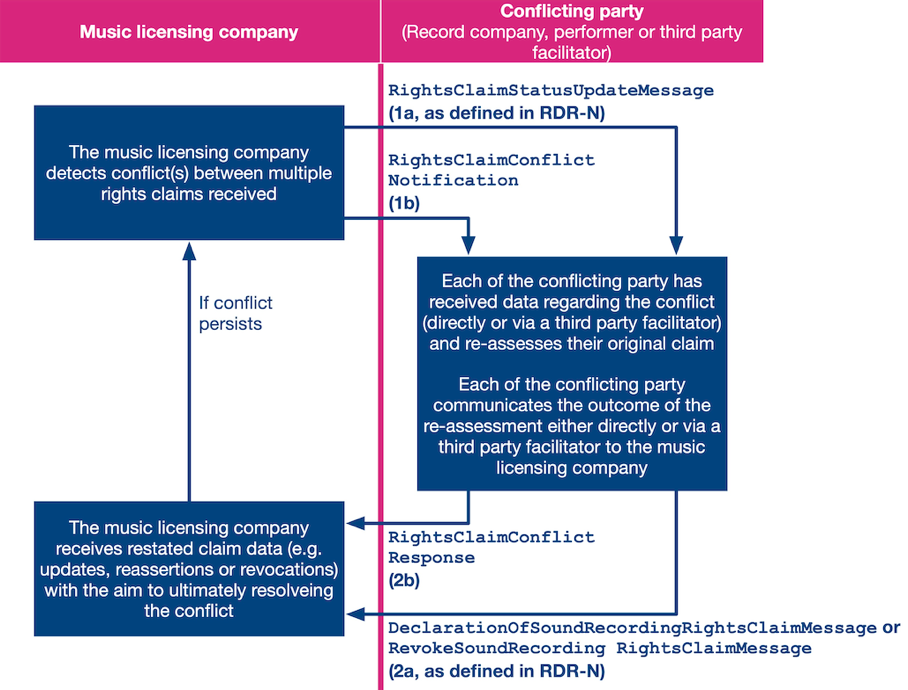7.3 Using Part 2 and Part 4 of the RDR standard in parallel
Those parties that are not using the messages in Part 2 of the RDR standard as set out in Clause 7.2 can also now exchange information about rights claim conflicts by using the RightsClaimConflictNotification of Part 4 of the RDR standard as an alternative.
To instigate the process a music licensing company will send either a RightsClaimStatusUpdateMessage from Part 2 of the RDR standard and/or a RightsClaimConflictNotification from this part of the standard. In this context the record company or third-party facilitator receiving one or both of these messages becomes a conflicting party.
Upon receipt of data about the rights claim conflict a conflicting party may undertake a review of their original rights claim and if using Part 2 of the RDR standard either send an amended claim in a DeclarationOfSoundRecordingRightsClaim or, if a conflicting party determines their original claim was in error they may revoke the original claim using another message of Part 2 of the RDR standard called the RevokeSoundRecordingRightsClaim.
If a conflicting party is using this part of the standard an update to an existing rights claim and additional information can be sent to the music licensing company using the RightsClaimConflictResponse as set out in Clause 6.2.
Figure 3 below sets out how the exchange of this part of the standard can be used as alternatives to the exchange of the messages as set out in Part 2 of the RDR standard, as described above.
Figure 3 – Choreography for communicating rights claim conflicts using messages defined in Part 2 and Part 4 of the RDR standard in parallel
Table 2 below summarises the data exchange choreography described in Figure 3. The table also indicates who sends which message to whom and when.
Message Name | Initiating Event | Sender | Recipient | |
|---|---|---|---|---|
1a |
| After receiving a The The | Music licensing company | Conflicting party or third-party facilitator |
1b |
| A music licensing company has detected a rights conflict and wishes to report it to the message senders of the conflicting claims. | Music licensing company | Conflicting party or third-party facilitator |
2a |
| A conflicting party has been informed by the music licensing company that their claim is in conflict with one or more other claiming party(ies) and wishes to update or maintain their claim using the The revocation may be communicated with the intention that the receiving music licensing company deletes, or marks as inactive, the rights previously claimed by the message sender. | Conflicting party or third-party facilitator | Music licensing company |
2b |
| A conflicting party has been informed by the music licensing company that their claim is in conflict with one or more other claiming party(ies) and wishes to communicate to the music licensing company that it:
|
|
|
Table 2 – for communicating rights claim conflicts using messages defined in Part 2 and Part 4 of the RDR standard in parallel
